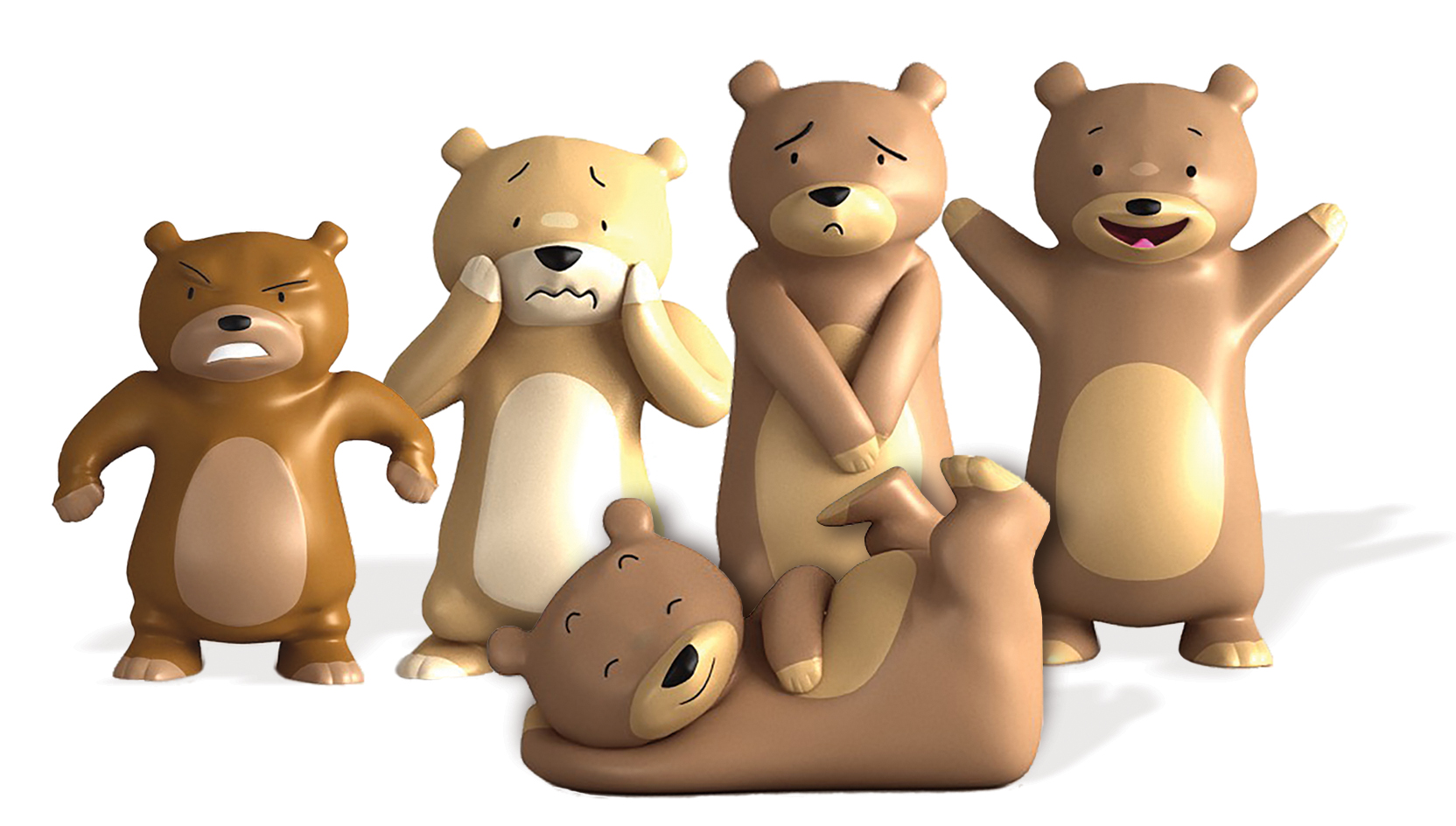
Big emotions and the 5 Bears
Posted: 08/07/2022When it comes to dealing with big emotions, not everyone has the language to describe how they’re feeling. Today we talk with school counsellor, Judith, who co-created a story to accompany the tactile Bears. What began as a story to help one young student has been welcomed across the classrooms.
How did the story come about?
One of the primary students I was seeing spotted my tactile Bears and they sparked an idea of a story about the Bears tackling an issue the student was dealing with. The narrative developed over our sessions as the Bears tried to help Angry Bear be less grumpy and, in the process, discover something important about themselves. The result was a lovely little story, complete with the student’s illustrations.
I’m interested in working with children to develop their emotional language, so they have words to put to feelings. Children know how they feel but they can’t always express how they feel. The process of creating the story and the illustrations helped this young student, and we shared it with her class.
The story was a hit with her classmates (and family!), so I decided to introduce the story to other primary classes, alongside the tactile Bears. It has continued to prove a popular way to introduce talking about emotions and how to tackle ‘big’ feelings.
How do you use the story and the tactile Bears?
I pop the tactile Bears in a box, and then I say to the class ‘I’ve got a family to introduce to you, some little characters who are hiding in the box’. This immediately gets everyone curious and interested, and I get them out one at a time and hold them up to ‘Oohh, they’re bears’! I ask, how do you think this bear is feeling today? And hands shoot up and the children have a range of ideas.
These little bears are a really safe way for them to make a guess and they don’t have to be right and they don’t all have to think the same thing. There are two bears who could be feeling sad or they could be feeling a bit afraid, I’m not sure, maybe they feel a bit of both, and that’s ok because feelings are never quite the same for all of us. And it’s just a lovely way of getting that language of emotions going, and you can make a list of all the words the children come up with to describe feelings.
I read the story and often the children want to tell me about a time in their life when they got really mad, or when they got sad. It’s a really lovely gateway to do that exploratory work around feelings, and what to do with big feelings, and ask what ideas have you already found that help you to just calm down little bit.

The Bears and wellbeing
I’ve done a couple of health classes with Year 7 students. I gave each of them a Bear card and asked them to have a look and think about how their Bear might be feeling and come up with a word or phrase. We go around the class and they hold up their card and say, for example, ‘I think my Bear is feeling really pleased with himself’, and they might add a little backstory ‘… because he’s just come top in the spelling test’. It’s a really good way of collecting this shared vocabulary around feelings and how vast a range of feelings we all have – sometimes even in one day. For example, anger isn’t a bad emotion, it’s just another emotion.
What advice would you give your peers?
Use the tactile Bears and the cards across the curriculum. They are easily transferable to writing exercises as a starting point for stories or creative writing. Encourage children to recount a time when they felt big emotions.
The Bears fit so well into the health component of the curriculum and help schools support mental wellbeing in creative and safe ways.
And they’re useful for adults to use, to acknowledge that we’ve all been brought up to believe things about different feelings and to get a sense of what different people think about anger or sadness or whatever.
More information on the tactile Bears here



Thanks for your feedback.
IR